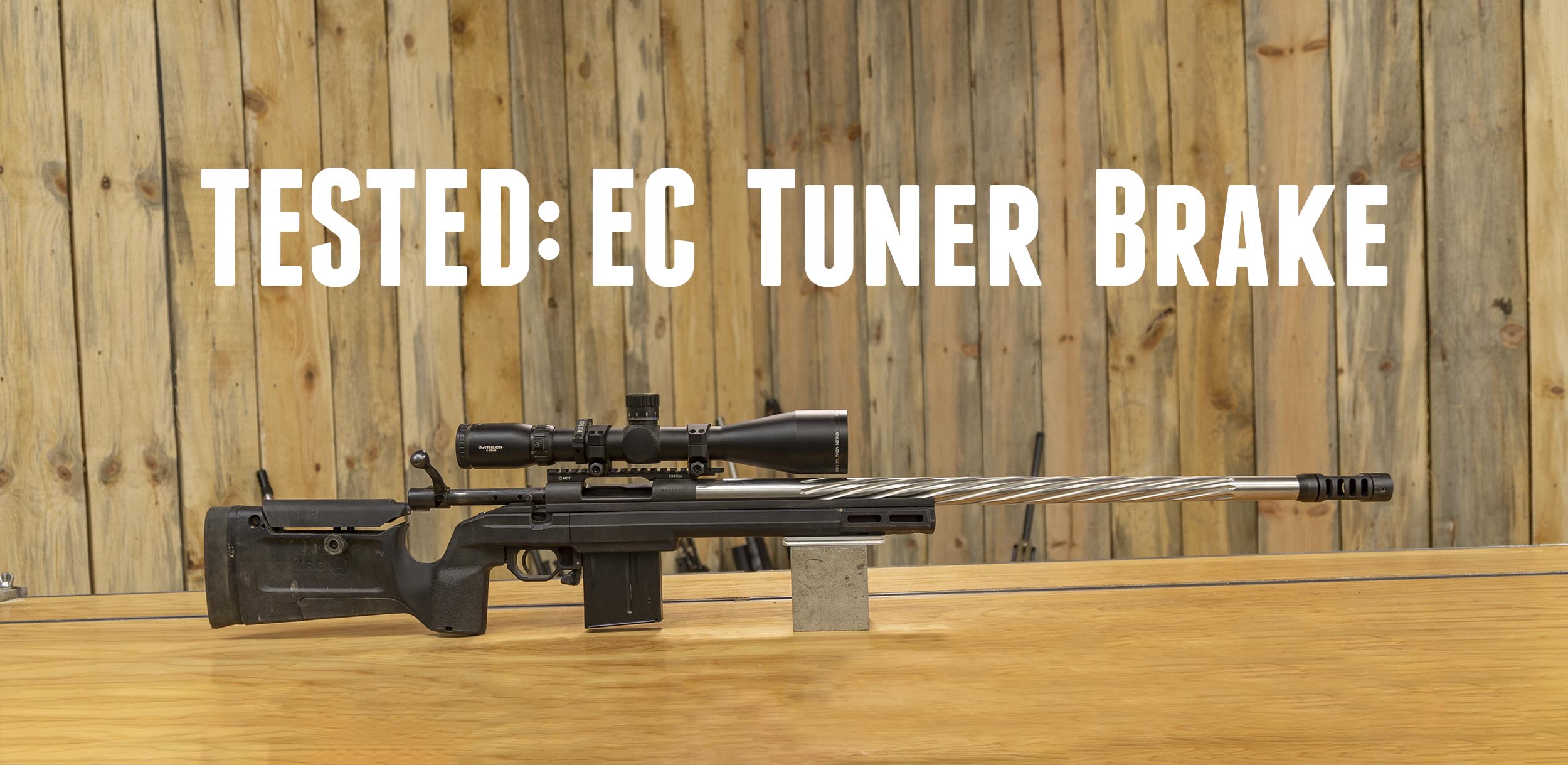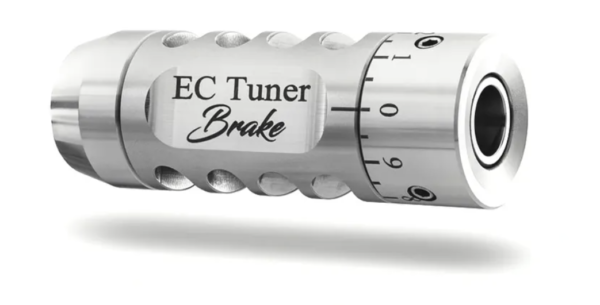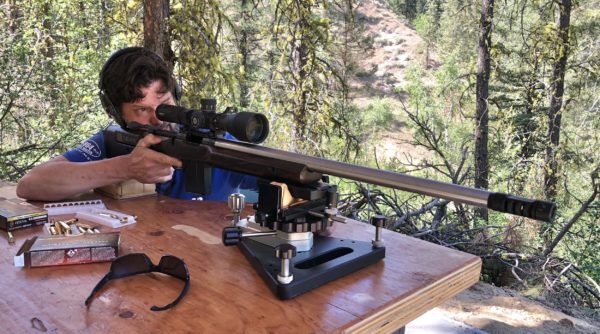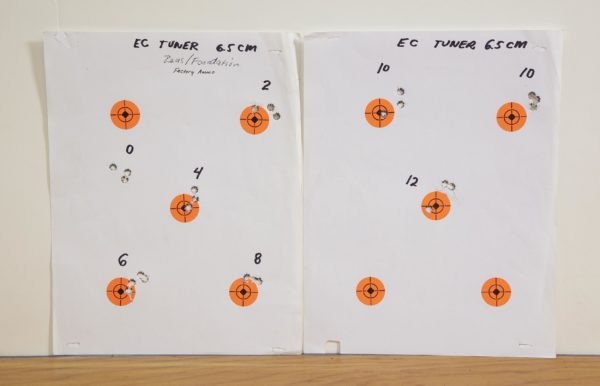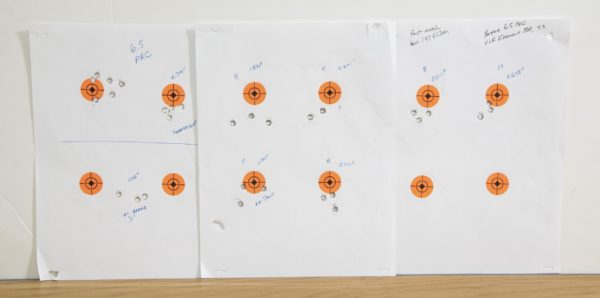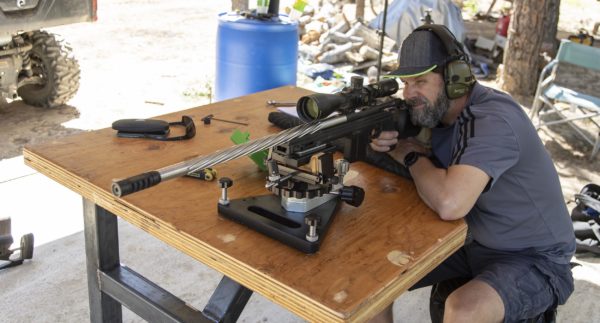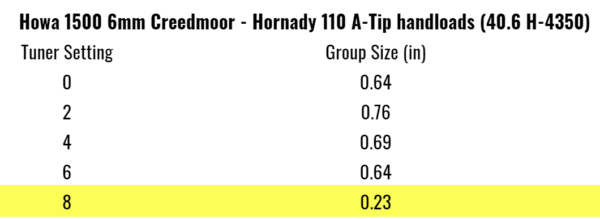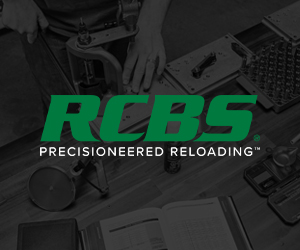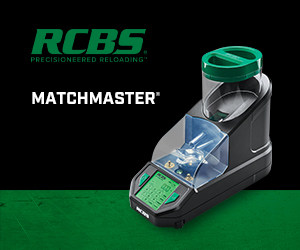Many of you in the Precision Rifle community have seen the new Patent Pending EC Tuner Brake from Erik Cortina, and have probably been thinking: “Does it work?”. In this story, we’ll find out by testing the EC Tuner Brake with three different rifles, with factory ammunition, and with handloaded ammunition.
About the EC Tuner Brake
From the Erik Cortina webiste:
This 4 port muzzle brake has an expansion chamber for maximum recoil reduction. It also has a self timing nut so that you can time it correctly on your barrel.
On the other end of the muzzle brake, it includes tool less design tuner. The tuner allows you to manipulate the harmonics on your barrel to match your load for best accuracy possible. Available in 6.5mm and 30 caliber. 5/8 – 24 threads. They are made of 303 Stainless Steel for maximum corrosion resistance.
Diameter: 1.1″
Length: 3.3″
Test Scenario 1: 6.5 Creedmoor, Factory Ammunition
Above you can see Travis Fox performing the test shooting with a custom 6.5 Creedmoor rifle and Federal Premium 130 grain factory ammunition.
The EC Tuner Brake has 10 major graduations on it’s scale per revolution. There are also minor graduation marks between each major graduation, yielding 20 total “tick marks” for each turn of the tuner mass. The mass can be turned out multiple times, but we never needed more than a bit over 1 turn to get interesting (good) results.
And here was our test process (for all shooting in this article).
- Start at “0” setting
- Shoot 3 shot group
- Advance setting by “2”
- Repeat
We stopped each test when we saw the groups contract and then expand again, or when we ran out of ammunition! This is first-round testing, with lots more follow-ups.
Here were the groups for this round of testing:
And here is the data in table form:
And here is the data in graph form:
This was a great result with a very respectable 0.37″ group (for factory ammunition).
Test Scenario 2: 6.5 PRC with Factory Ammunition
The second test used a Bergara HMR Wilderness rifle in 6.5 PRC, put into an XLR Element 4.0 Magnesium chassis with weights and rear bag rider. We were seeing some pretty heavy harmonics and shot dispersion with Hornady 147 grain ELD-M factory ammunition using this setup, so we thought we would see what the EC Tuner brake could do to help out. The same testing methods were applied for this scenario.
Here were the groups for this round of testing:
And here is the data in table form:
And here is the data in graph form:
These results were a bit less conclusive, but you can see here how the tuner setting did indeed have a *large* effect on group size. The ~0.6 MOA groups at setting “4” and “10” were good. With this rifle setup, it may be worthwhile to try different bullets and loads *with* the EC Tuner Brake to see if things can be improved even more (story in progress).
Test Scenario 3: HOWA 1500 Custom 6mm Creedmoor with Handloads
This HOWA 1500 was an example of another rifle setup that has proven to be sensitive to things like load variations, and even having a Magnetospeed chronograph attached. We figured this would be another ideal scenario to test the EC Tuner Brake with! We used our 40.6 grain H-4350 load and Hornady 110 grain A-Tip bullets (see full article HERE).
Here were the groups for this round of testing:
And here is the data in table form:
And here is the data in graph form:
Wow! These were the kind of results we were looking for. If we had more ammunition, we would have kept shooting to see if things would “open back up”. Good stuff!
What’s Next
There’s a lot more to explore with this tuner brake, and with other tuners including:
- Repeatability when tuner is removed/replaced on rifle – settings dialed back to previous known-good values.
- Shooting multiple groups in sequence at specific value (basic repeatability of result).
- “Honing in” on groups using more fine-grained settings, example: Testing 1,2,3,4 instead of 2,4,6,8. Example 2: using minor settings: If 2 and 3 are good, trying 2.5, etc.
- Using in load development: first using charge weight to find velocity node, then tuning groups with tuner.
- Testing 30 caliber version.
This was fun, and I’m excited to have the tuner in the shop!
If you want one of these tuners, you can get it directly from Erik Cortina’s website. If you have thoughts, please leave a comment!
Don’t miss out on Ultimate Reloader updates, make sure you’re subscribed!
Thanks,
Gavin
